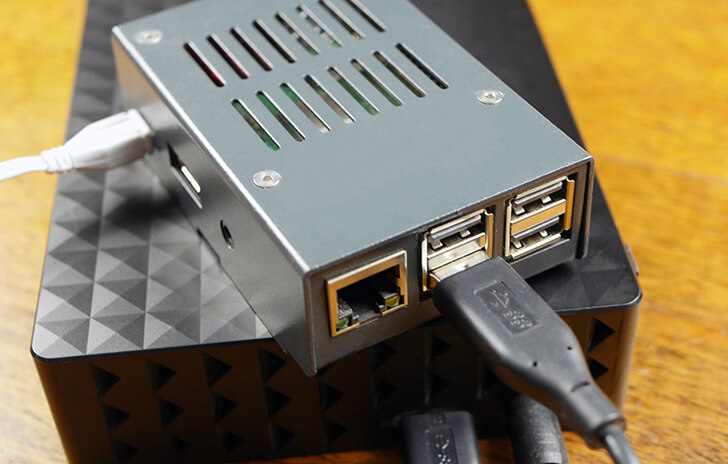

- #RASPBERRY PI BITTORRENT TRANSMISSION AND SAMBA SERIAL#
- #RASPBERRY PI BITTORRENT TRANSMISSION AND SAMBA CODE#
- #RASPBERRY PI BITTORRENT TRANSMISSION AND SAMBA PASSWORD#
Type in “sudo mkdir /mnt/torrents” and press “Enter” Type “print” and then press “Enter” to check if the partition was created successfully. Type in “mkpart primary ext4 0% 100%” and press “Enter” Type in “mktable msdos” and then press “Enter” You can press “P” to check the partitions at any time. Type “sudo parted /dev/sda” and press “Enter” Type in “sudo umount /dev/sda1” and press “Enter”
#RASPBERRY PI BITTORRENT TRANSMISSION AND SAMBA PASSWORD#
Log in with the username “pi” and the password you set up before.Ĭompare the IP Address to check if you’re using OpenVPNĬonnect your HDD by USB to the Raspberry Pi. Reboot your Raspberry Pi by typing “sudo shutdown -r 0” Type in “sudo nano /etc/default/openvpn” and press “Enter”Ĭreate a new line under the last “AUTOSTART” and type in “AUTOSTART=”COUNTRYTHATYOUWANTTOCONNECTTO”” Test if the configuration works by typing “sudo openvpn *COUNTRYTHATYOUWANTTOCONNECTO*.conf” and press “Enter” If it works, press “Ctrl C” to finish the connection. Move down to “ca” and type in “/etc/openvpn/” Go down to “crl-verify” and add “/etc/openvpn/” Scroll down to the “auth-user-pass” section, press space and add “/etc/openvpn/nf” Type in “sudo cp *COUNTRYTHATYOUWANTTOCONNECTO*.ovpn *COUNTRYTHATYOUWANTTOCONNECTO*.conf” and press “Enter” Type in “sudo chmod 400 nf” and press “Enter” Type your PIA’s Password on the second line. Type your PIA’s Username on the first line. Ser.Type “sudo nano nf” and then press “Enter” It means that any device at the receiving end can display that text.
#RASPBERRY PI BITTORRENT TRANSMISSION AND SAMBA SERIAL#
Where n is the current counter number to the serial port. We then write a loop to continually writing the text “Write Counter: n”. Port='/dev/ttyS0', #Replace ttyS0 with ttyAM0 for Pi1,Pi2,Pi0 Timeout is the time that serial commands should wait for before timing out. Stopbits indicates the end of data transmission. Parity chooses whether we should be doing parity checking. Baudrate is the rate at which information is transferred. Here, port defines the serial port that the object will read and write over.

#RASPBERRY PI BITTORRENT TRANSMISSION AND SAMBA CODE#
We then import the libraries needed to run the code #!/usr/bin/env python Otherwise, it will likely attempt to run it as a standard bash script. The first line of code is there to tell the operating system what it should try running the file with.

In the text above, it has been connected to ttyUSB0 Programming for Serial Write ch341-uart converter now attached to ttyUSB0 Make a note of what your USB device was attached to as you will need this to complete the tutorial. In the output of this command, take note the USB specified.įor example, my own converter was attached to ttyUSB0 as we have shown in our output below. Once you have connected your USB-Serial adapter up and it is plugged into the Raspberry Pi, type the following in the terminal dmesg | grep ttyĢ. In a practical application, you will be connecting your serial connection to an actual deviceġ. Have your USB-Serial adapter plugged into the RS232 adapter, and the USB end of the USB-Serial adapter to be plugged into your Raspberry Pi’s USB Ports. We will be using a RS232 to TTL Adapter to create a loop back to the Raspberry Pi. To do so, you will either be prompted, or you can type sudo reboot Prerequisites After this, make sure to restart the Raspberry Pi. Once the Raspberry Pi has made the changes, you should see the following text appear on your screen. Select Yes when prompted to make use of Serial Port Hardware and press enter.Ħ. You will then be prompted to choose whether you want the login shell to be accessible over serial. On the next screen, use the arrow keys again to select “Serial“, and hit enterĥ. Use the arrow keys to select ‘Interfacing Options’ and click enterĤ. com/raspberry-pi-configuration-settings/. For more details on this check out: iot4beginners. This command will load up the Raspberry Pi configuration screen. To open the Raspberry Pi configuration tool type: sudo raspi-configģ. This will allow us to enable and disable the serial input/output interface. The GPIO pins on the board are assigned as:Ģ. To connect pins to the Raspberry Pi board, you can use either female to female wires to directly connect them or use a breadboard as in this tutorial. The RS232 to TTL adapter will have four connections which will be labelled: GND (Ground power-supply pin), RX (Received Data), TX (Transmitted Data), and VCC (Power-supply pin). Raspberry Pi with OS installed (available on the official website).Asynchronous serial communication is widely used for byte oriented transmission. Raspberry Pi uses UART (Universal Asynchronous Receiver/Transmitter) is a serial communication protocol in which data is transferred serially i.e. It is also a simple, yet effective method of communication and is easy to learn and master for beginners. Serial communication is a widely used approach to transfer information between a system and peripherals connected to it.


 0 kommentar(er)
0 kommentar(er)
